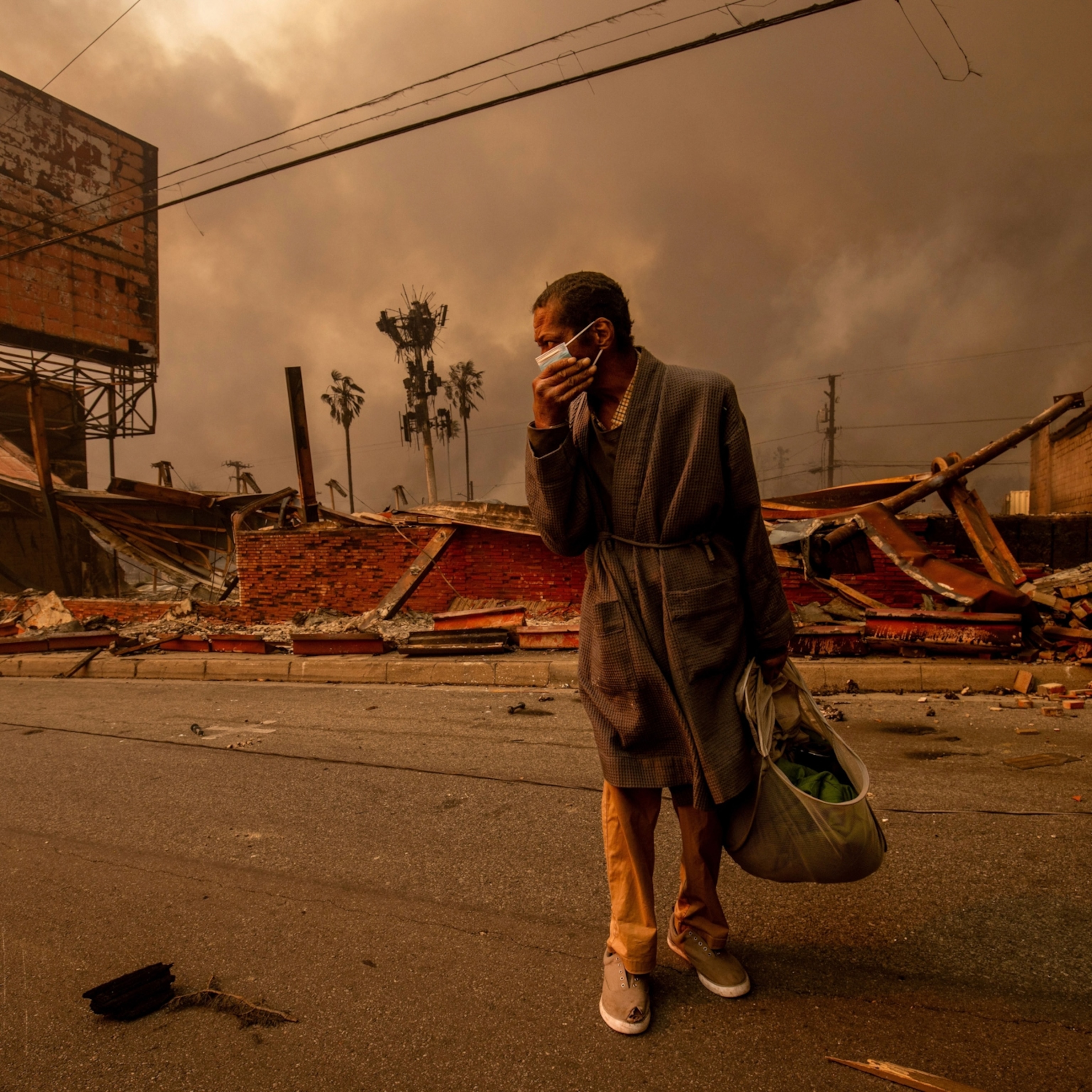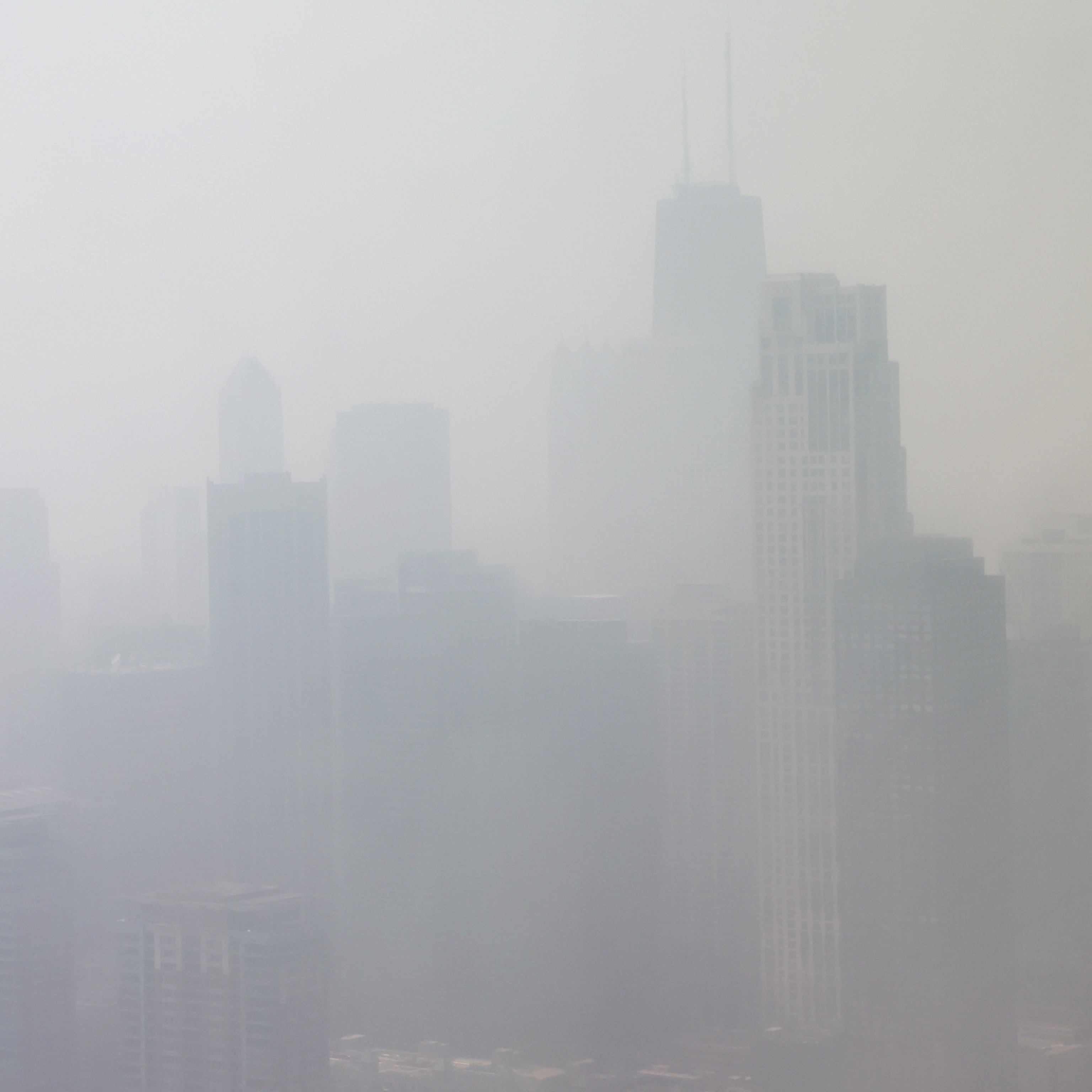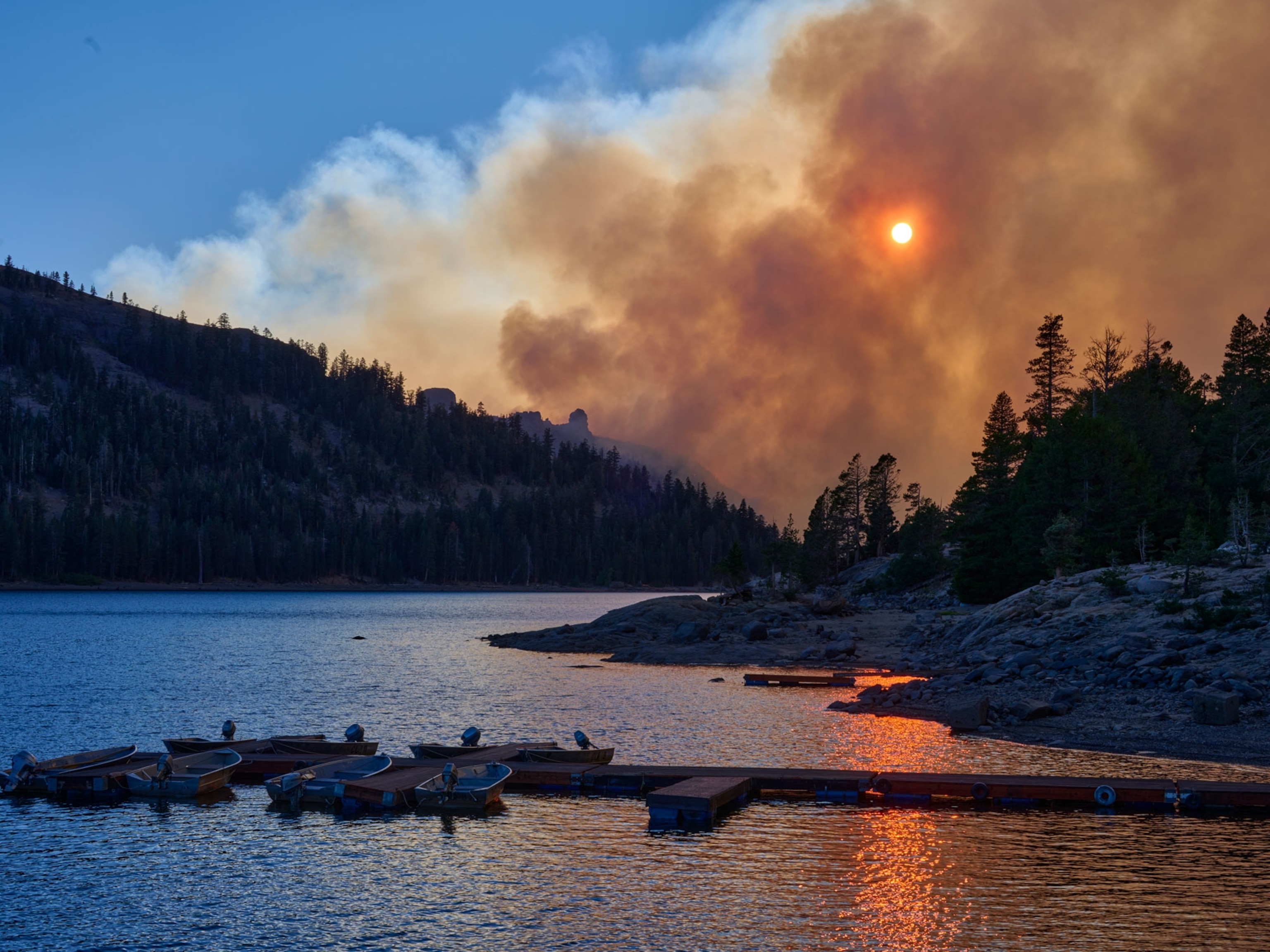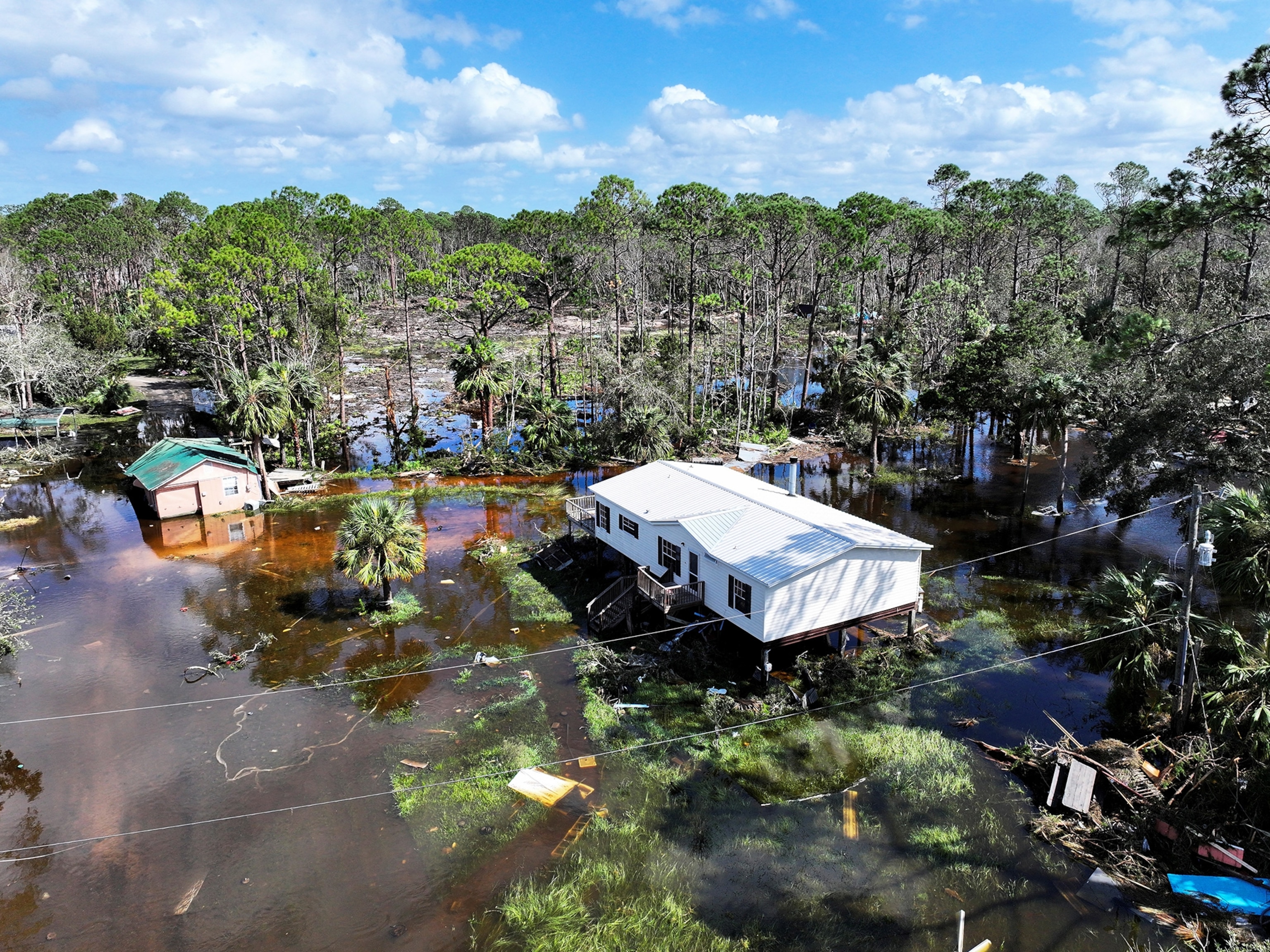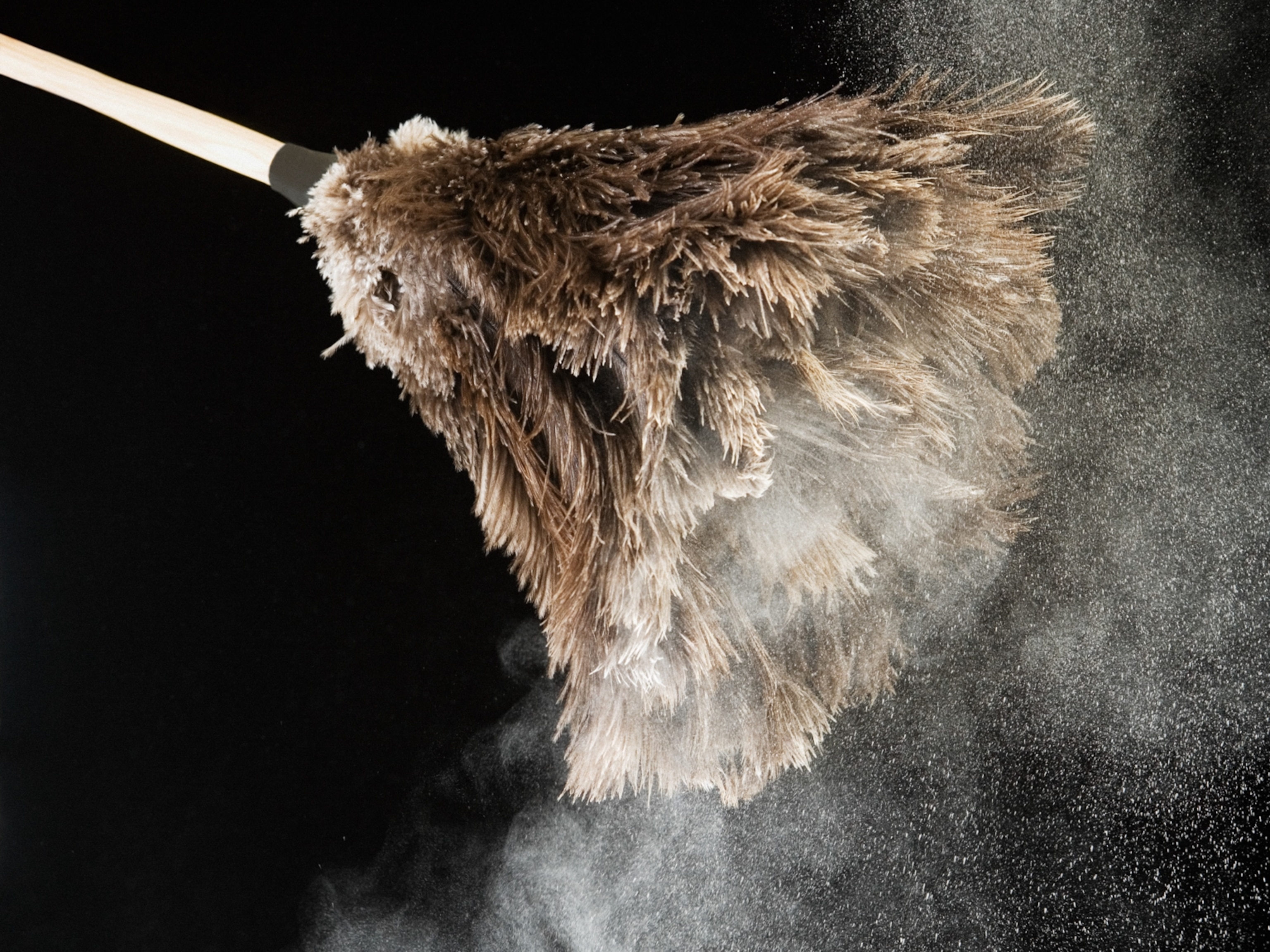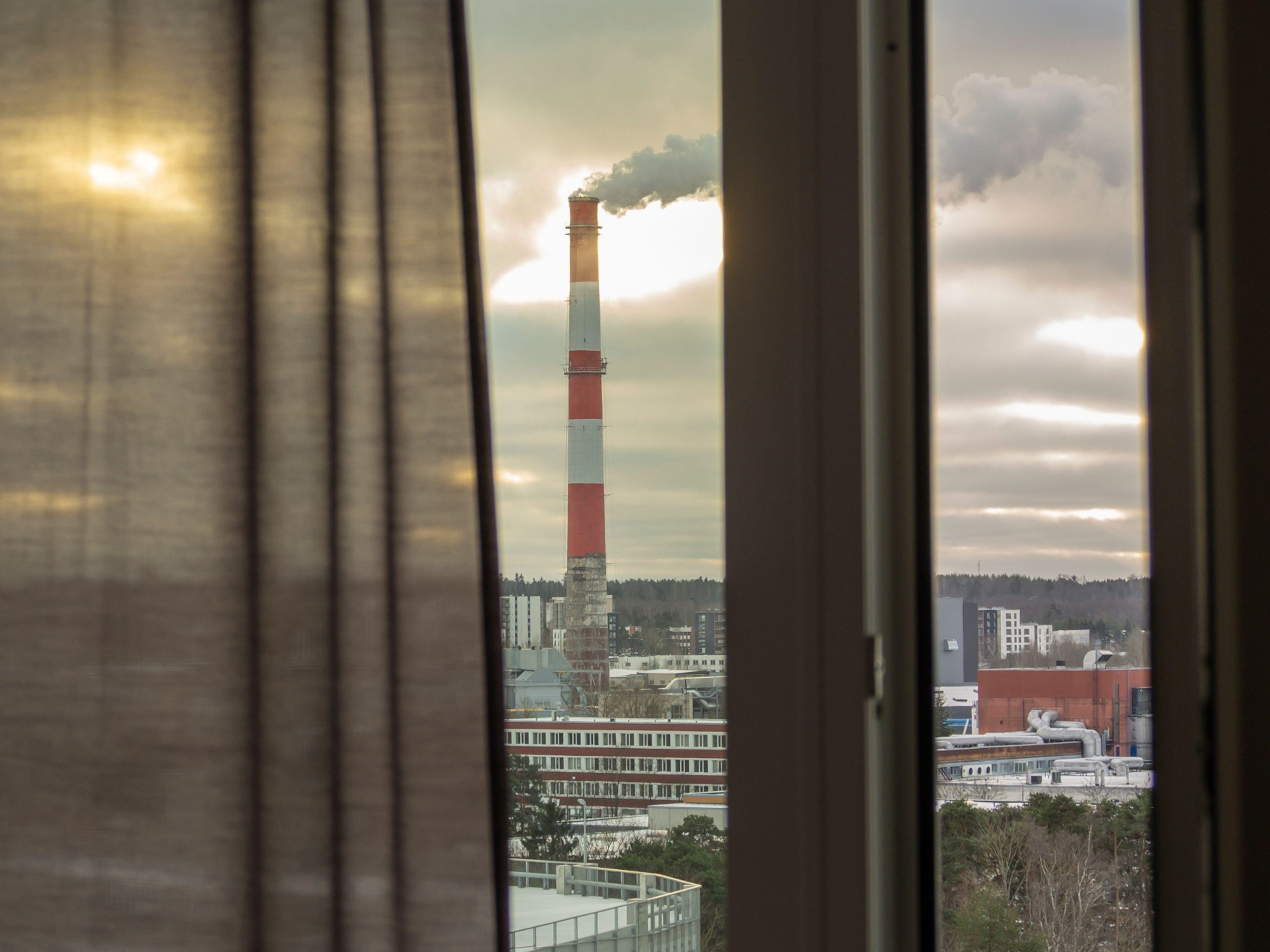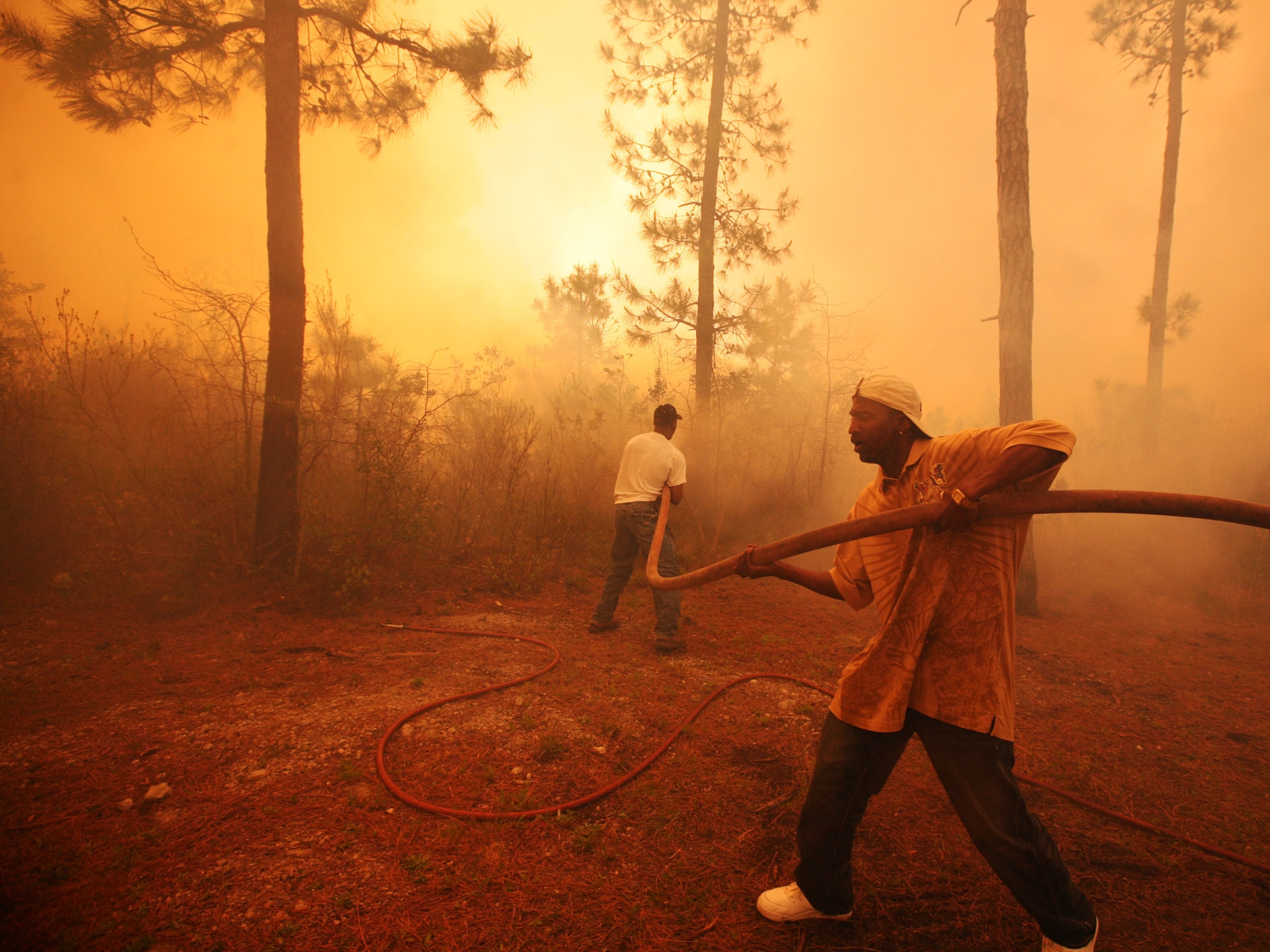
Orange skies are the future. Prepare yourself.
Our photographer who has covered over 125 wildfires shares tips on how to prepare for smoke-filled skies—from the best masks to jury-rigging your own air filtration system.
As climate change drives an increase in wildfires, we’re seeing more smoke lofted into the upper atmosphere each fire season. Depending on wind and weather, this smoke can spread hundreds or thousands of miles from its source—as we saw in early June on the U.S. East Coast.
And we’re likely to continue seeing it increase in severity, frequency, and longevity as the planet warms. As a photographer who has photographed over 125 wildfires in California over the last decade, I’ve gleaned some helpful tips and best practices for how to reduce exposure to harmful air once it reaches a town near you.
First, why is it getting worse?
In the U.S., the 10 worst wildfire seasons for acres burned have all occurred since 2004. Records are set and then re-broken each year in acreage, homes destroyed, or lives lost.
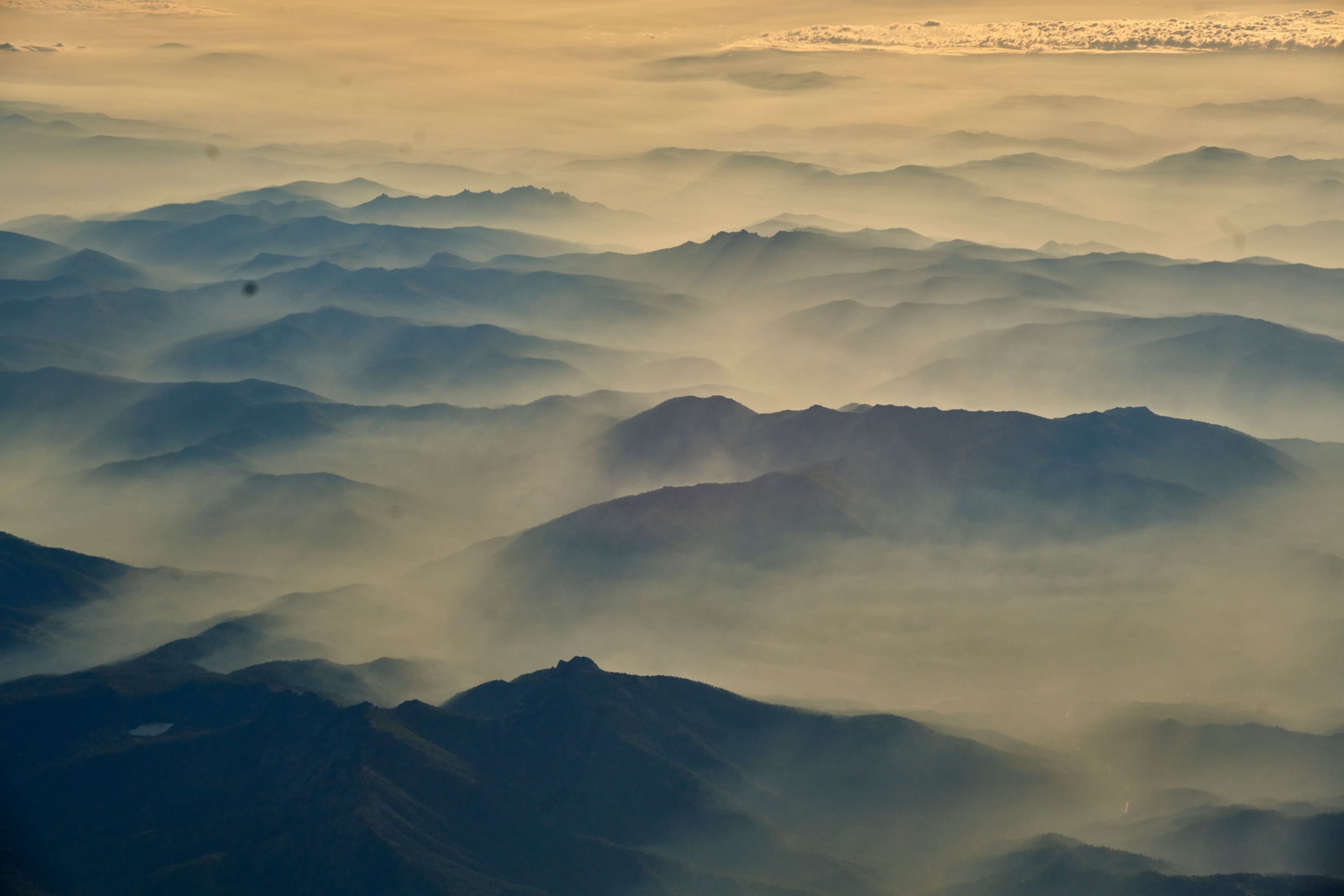
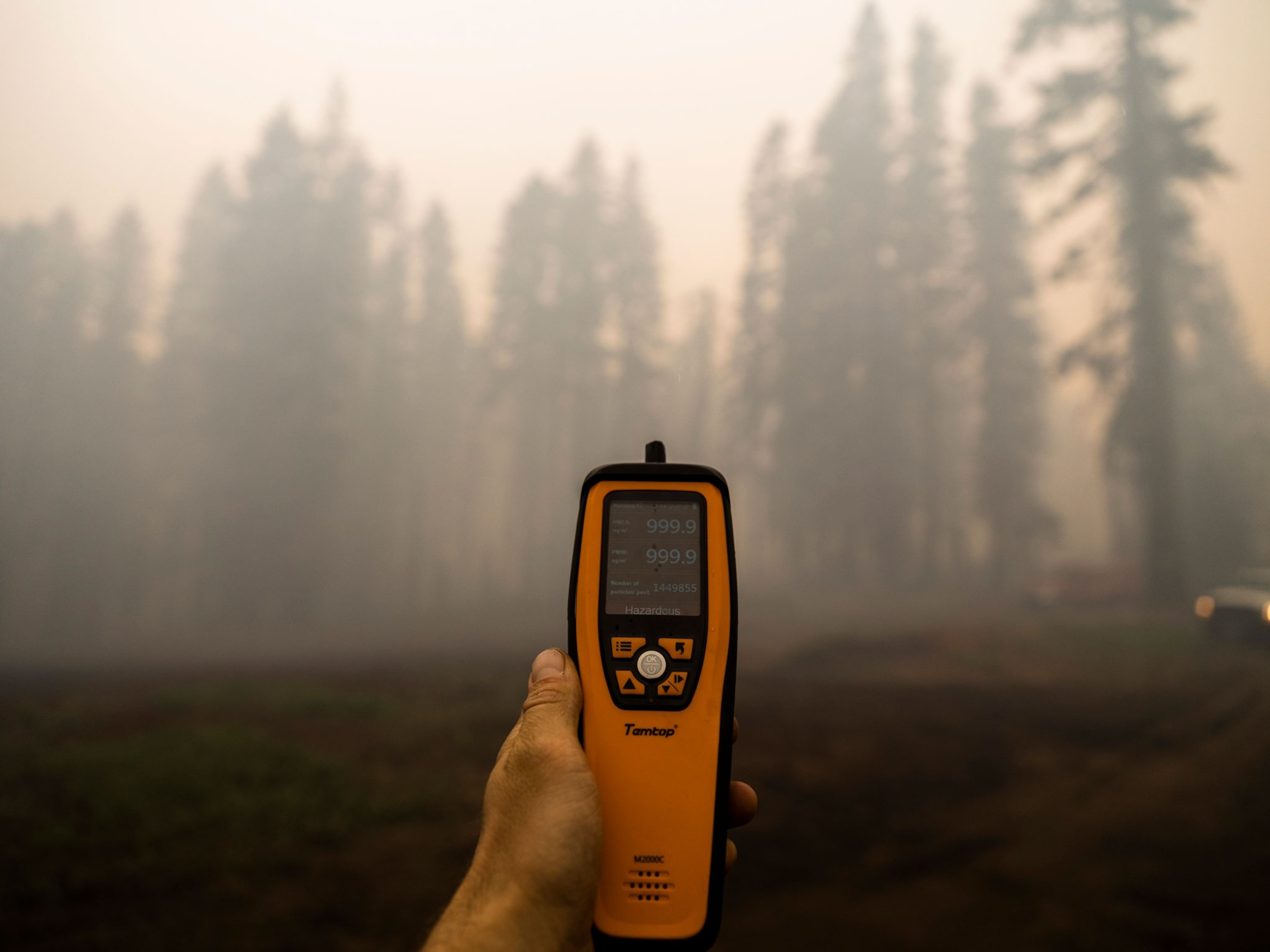
(The science connecting wildfires to climate change.)
There is no winner in breaking records for these categories. The conditions for “smoke events” impacting major population centers become more frequent and likely each year, as climate change drives conditions—such as heat, drought, and the increasingly important vapor pressure deficit—that promote large wildfire growth.
So what can you do?
An individual is powerless to change the weather or control where smoke goes, but there are things you can do to prepare and protect yourself from the worst of it.
Monitor local AQI forecasts: A great starting point is Airnow.gov which gives helpful color-coded charts for varying degrees of smoke-filled air, known as the Air Quality Index, or AQI. This can help you understand the risks facing your local area.
As a general rule, an AQI of 100 starts to become hazardous, with larger tranches of people becoming affected as the AQI increases. On June 7, for example, New York City exceeded 400 AQI in some boroughs, meaning hazardous air for just about everyone outside. People who are asthmatic like me may feel affected by AQI above 75.
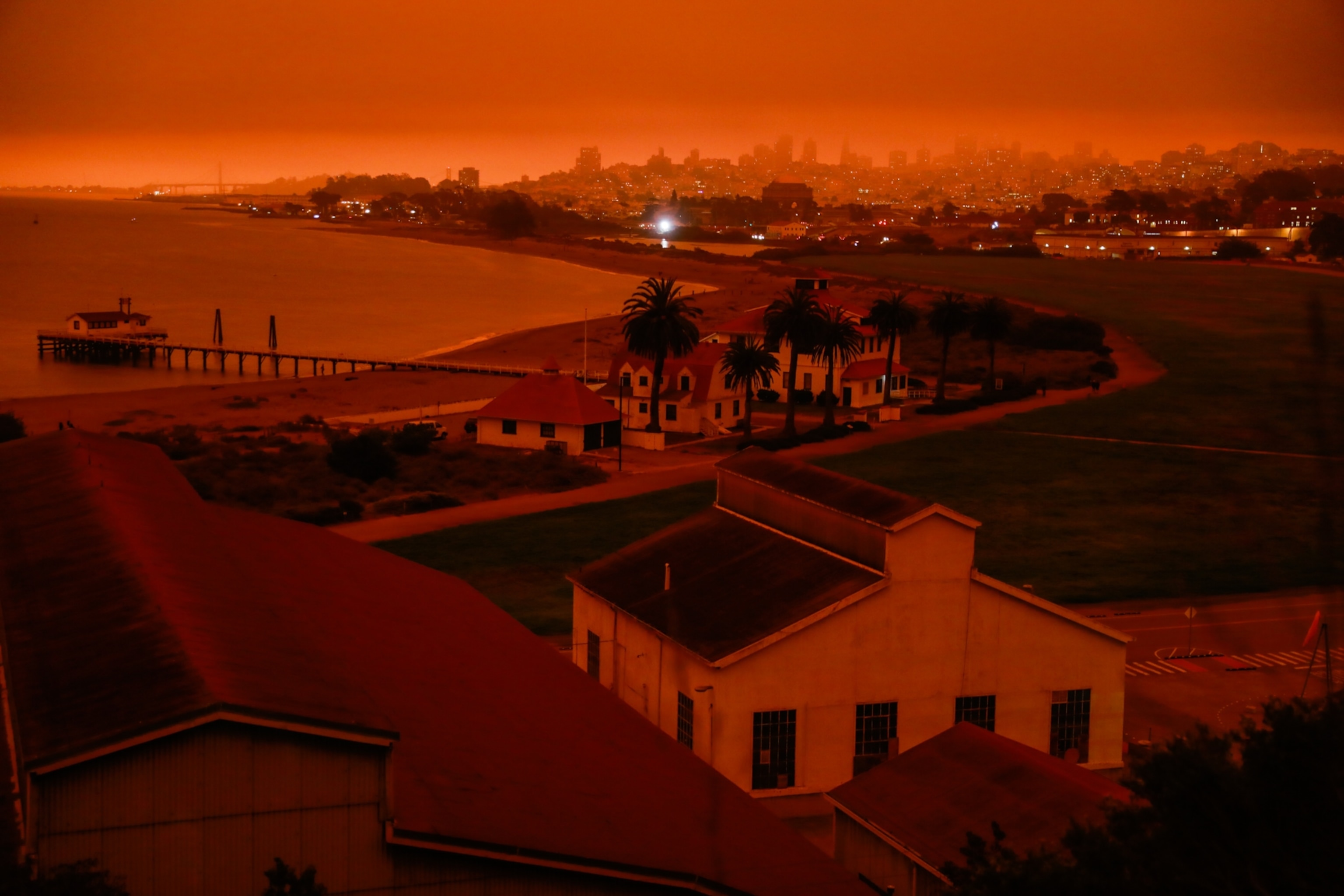
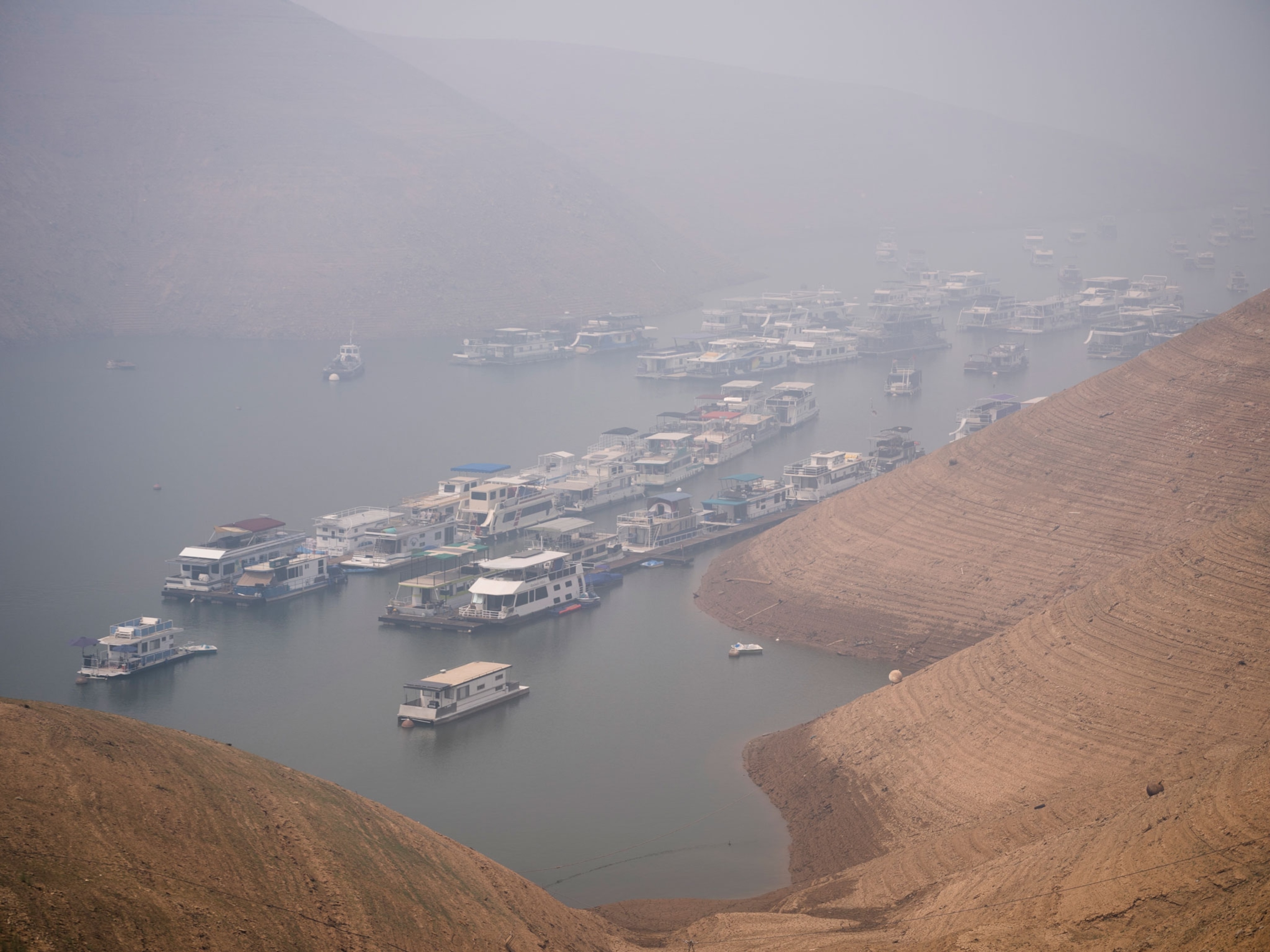
(What the Air Quality Index measures—and how to interpret it.)
If you have the luxury of an indoor job or remote work, staying inside gives you better control over the air environment. Those working outside should limit their physical activity, and while guidelines are being developed for outdoor air quality, some states like Washington even require workers to be provided with masks on extremely poor air days.
Wear a NIOSH-approved N95 or better mask outdoors: The best mask should have two straps, one that goes above your ears, and the other below, for a better face seal to ensure you don’t suck in any smoke particles when you inhale. Popular for extended wear is the Envo mask series, which uses proprietary N95 replaceable filters, an adjustable elastic band, and gel for contact with the face.
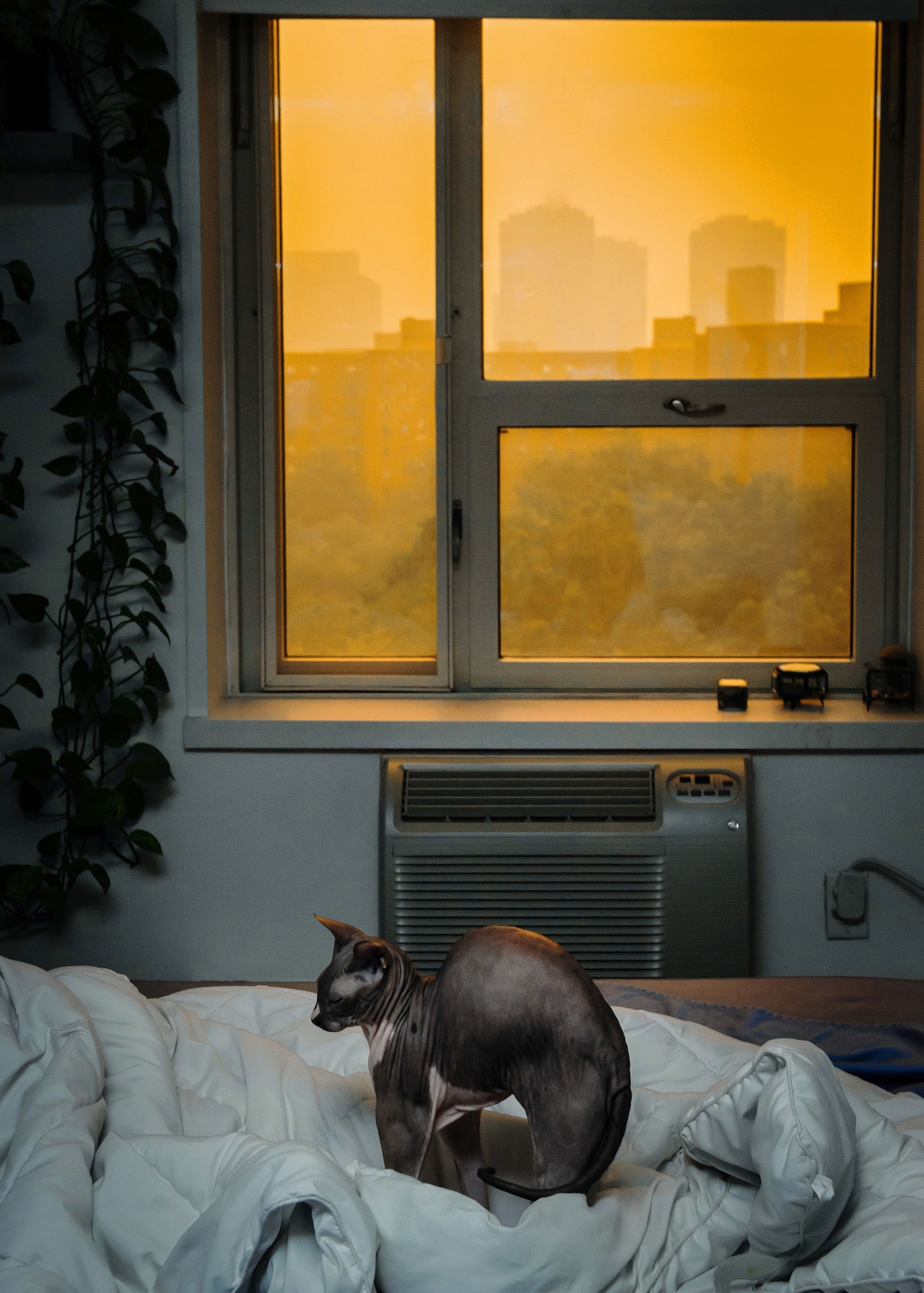

You can get higher levels of protection from disposable P100 and reusable P100 half-face masks such as the Sundstrom SR-100 respirator series, which are sometimes used by wildland firefighters in more static environments. The higher protection masks cost more, are bulkier, and are less practical for casual use. For higher comfort, you can also get an N95 mask with an exhalation valve, which will reduce fogging and the buildup of moisture and heat from breathing out air.
Invest in a better air filter: If your home/office has central air, ensure your air filter is rated for 2.5 micron particles. This typically costs more than a basic dust filter, but is better at filtering out the smaller smoke particles suspended in the atmosphere. If your filter looks visibly dirty, replace it. Be sure to replace it every three months during fire season, and every six months under normal use.
(How wildfire smoke affects your body—and how you can protect yourself.)
Create your own air filtration system: Whether you have central air or a window AC, you can supplement your air purification with a Corsi-Rosenthal box—a DIY solution using four filters duct taped together with a fan on top, creating an ad-hoc room-to-room filtration solution. For $100 to $150, you can create a robust solution that will exchange air within about 500 square feet five times per hour.
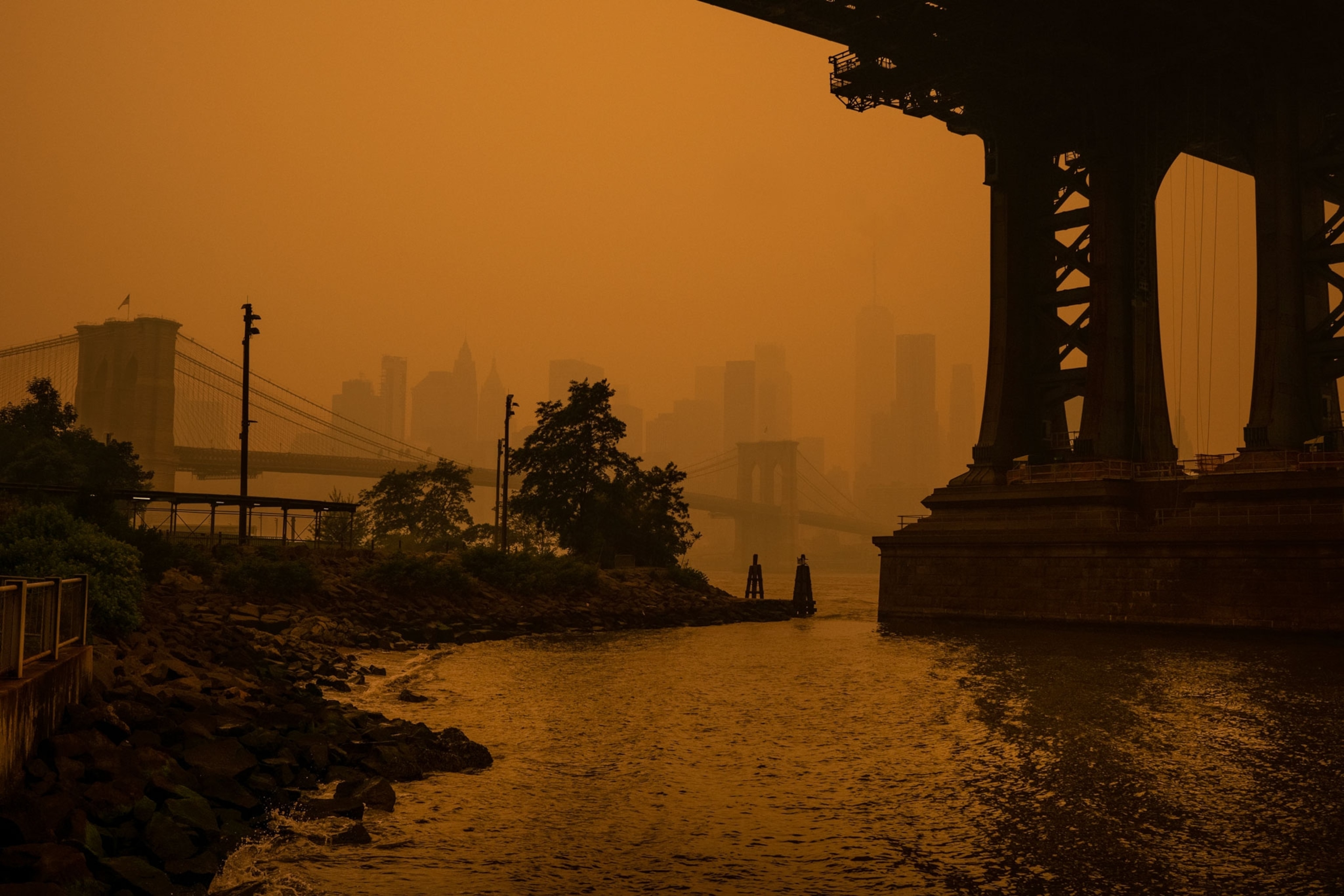

How does it work? Air is sucked in through the filter, and pushed out from the fan upward. The basic design requires only cardboard, duct tape, a box fan, and air filters, all of which can be found at a local hardware store. Note that this isn’t a replacement for wearing masks outside, and you will need space around the fan for air to pass into the filters.
Take care of your eyes: Over-the-counter generic eye drops are great for bloodshot eyes irritated by particulate matter, and will help lubricate the surface of the eye and aid in flushing away contaminants.
Stock up on supplies well before summer, peak fire season: This will ensure you have materials at hand to use when smoke arrives, as stocks will deplete during smoke and wildfire events.
Consider getting out of town: If you are considered higher risk and have the means and ability to do so, it might ultimately best to leave home if your area is going to be impacted by smoke. Refer back to Airnow.gov to see if you fall in a higher-risk category but generally this includes people with asthma and heart or lung disease.

